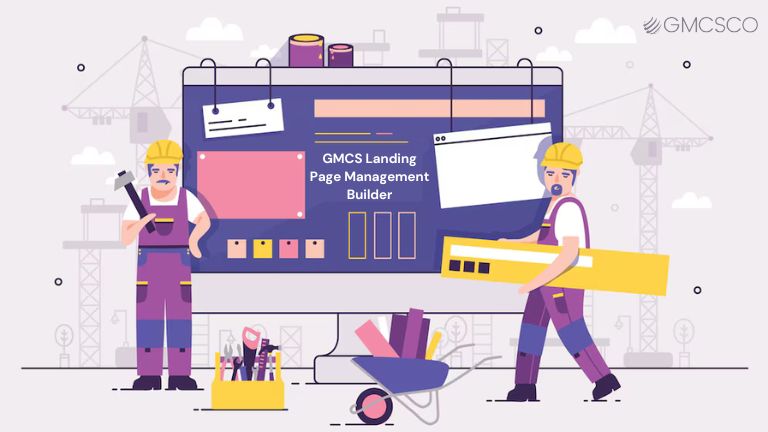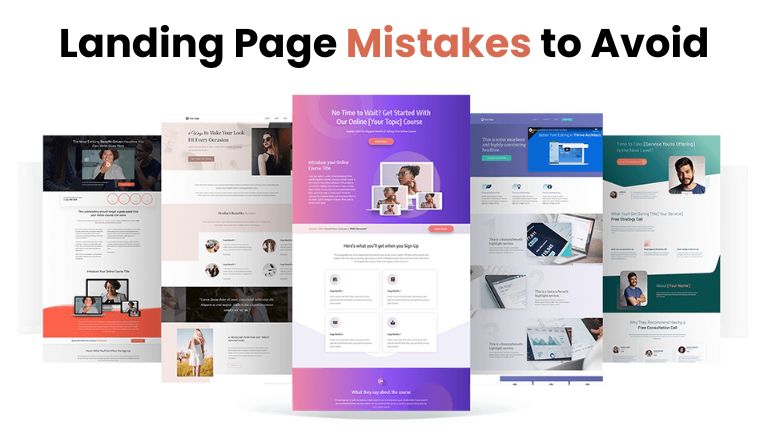Best Landing Page Builder for Lead Generation
Welcome to the world of the digital age, where staying ahead is as important as growing for businesses. The smartly designed landing page helps you with boosting lead generation efforts; it also acts as that first gateway for the customers to interact with your brand. To help you achieve these results, it is important to utilize a landing page builder which can deliver high-converting pages. Today we will go exploring which are the best landing page builders for lead generation, with a specific focus on GMCS Landing Page Management Tool. Why a Landing Page is Crucial for Lead Generation But before jumping into the finest tools you can use, let’s understand why landing pages are super important: Target Messaging: Landing pages create a tailored message to your audience, making all marketing campaigns more relevant and building resonating messaging. Specific Conversion Route: Landing pages are not meant as homepages, but as targeted sites where every action fits to one goal, whether it is regarding email sign-ups, content downloads, or free trials/demos. Improved Tracking and Analytics: Landing pages help you improve tracking and analytics to better understand how your users behave, providing a powerful set of insights so you can optimize more effectively. Better User Experience: An impeccably designed landing page serves an obvious and prompt value proposition to the user, thus clearing their doubts away. Key Features of a Great Landing Page Builder Features to look out for in a landing page builder for lead generation: User Friendly: The tool is user-friendly so you can design web and landing pages without technical knowledge. Templating and Customization: Templates give you a lot of design options, so your landing pages can look top-notch. Compatibility: The builder needs to be easily compatible with your existing ecosystem, including CRM, email marketing, and analytics tools. Mobile Optimization: If your landing pages are not responsive and do not look good on mobile, then you should get them optimized for mobile devices. SEO Features: Includes a native tool to increase the ranking of its landing pages in search engines. Here are some of the top landing page builders that excel in lead generation: Unbounce Key Features: Drag-and-drop editor with hundreds of custom templates Ability to A/B test to maximize your page views. Supports common marketing tools such as HubSpot, Mailchimp, and Salesforce. Dynamic text replacement to create a customized user experience. Pros: Highly flexible and easily adaptable Strong focus on conversions Excellent customer support. Cons: Expensive for smaller businesses. Leadpages Key Features: Easy drag-and-drop builder with professional templates. Connects with popular email marketing and CRM platforms Integrated payment gateway for selling products directly from landing pages Large library of templates optimized for conversions. Pros: Affordable pricing plans High-converting templates Good customer support. Cons: Fewer design and customization options than some competitors. ClickFunnels Key Features: All-in-one solution for building complex marketing funnels. Wide range of templates based on different funnel stages. Integrates with third-party tools. Built-in analytics and A/B testing. Pros: Comprehensive solution for funnel building. Highly customizable and flexible. Ideal for sales funnel-oriented businesses. Cons: Steeper learning curve. Higher pricing plans Introducing GMCS Landing Page Management Tool What makes this one of the best landing page builders is that it also functions as a very powerful lead generation tool, with GMCS Landing Page Management Tool sitting right there at the top place among them all. Key Features of GMCS Landing Page Management Tool Here are some best features of this landing page tool: Easy to Use Interface: GMCS provides a drag-and-drop builder where a non-technical person can design high-converting landing pages. High-Converting Templates: Pick from a gallery of high-conversion templates that really capture leads. Media Conversion Measurement: Built-in advanced analytics show you how your landing pages are performing and what data to use that helps refine their performance better. Seamless Integrations: Connect GMCS with CRMs, email marketing tools, and social media platforms. Mobile-Ready: Clear and concise landing pages that work on any screen to create a smooth experience for every type of user. SEO Tools: Landing pages this website builder creates are optimized for search engine data, which helps generate page views. Why Choose GMCS Landing Page Management Tool? Customizable Designs: Make your landing pages look and feel flagship; consistent with the overall style of the brand on all marketing channels. Reliable Support: Excellent customer support provided by GMCS to assist you with any problems or questions. Highly Affordable: Competitive pricing plans ensure marketability with businesses big and small. Conclusion Ultimately, a good landing page and the right builder are critical aspects of your lead generation strategy. But out of all the great ones offered, GMCS Landing Page Management Tool is best for its intuitive setup and powerful landing page conversion driving capacities. GMCS has everything you need to build high-converting, lead-capturing landing pages for your business whether it’s small or an enterprise. Continue on your lead journey with the GMCS Landing Page Management Tool and see how it really can change everything in marketing. Also Read About: How to Create High Converting eCommerce Landing Page






